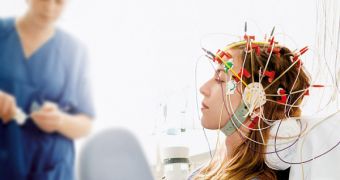A new scientific experiment provided doctors with reasons to hope that, one day, they could have a potential alternative therapy for motor recovery after powerful strokes. Scientists from the Beth Israel Deaconess Medical Center and the Harvard Medical School managed to succeed in their latest experiment, which implied the use of low-intensity currents to stimulate certain areas of the brain.
Volunteers for this study were divided into three groups. The members of the first had both their brain hemispheres stimulated, members of the second group received current stimulation in just one of them, while the third group did not undergo any kind of procedure. After being subjected to the influence of the current, the test subjects were asked to write symbol sequences on a keyboard.
According to Dr. Gottfried Schlaug and Dr. Bradley Vines, the authors of the new study, they noticed a 24 percent increase in dexterity capabilities in those who had received bi-lobar electric brain stimulation. The second group only showed a 16 percent increase in skills, while the placebo group scored a 12 percent rise.
The transcranial direct current stimulation (tDCS) therapy proved effective in enhancing patients' abilities to use their non-dominant hand. This non-invasive technique uses very low frequency currents and is not at all dangerous. The intensity of the electrical current is a thousand times smaller than that used in electro-convulsive shock therapies.
"The results of our study are relevant to clinical research on motor recovery after stroke. They point to the possibility that stimulating both sides of the brain simultaneously, using the effects of the direct current to block unwanted effects of one motor region while using the opposite effects of the direct current treatment on the other motor region to enhance and facilitate the function of that motor region might catalyze motor recovery," Schlaug concluded.

 14 DAY TRIAL //
14 DAY TRIAL //